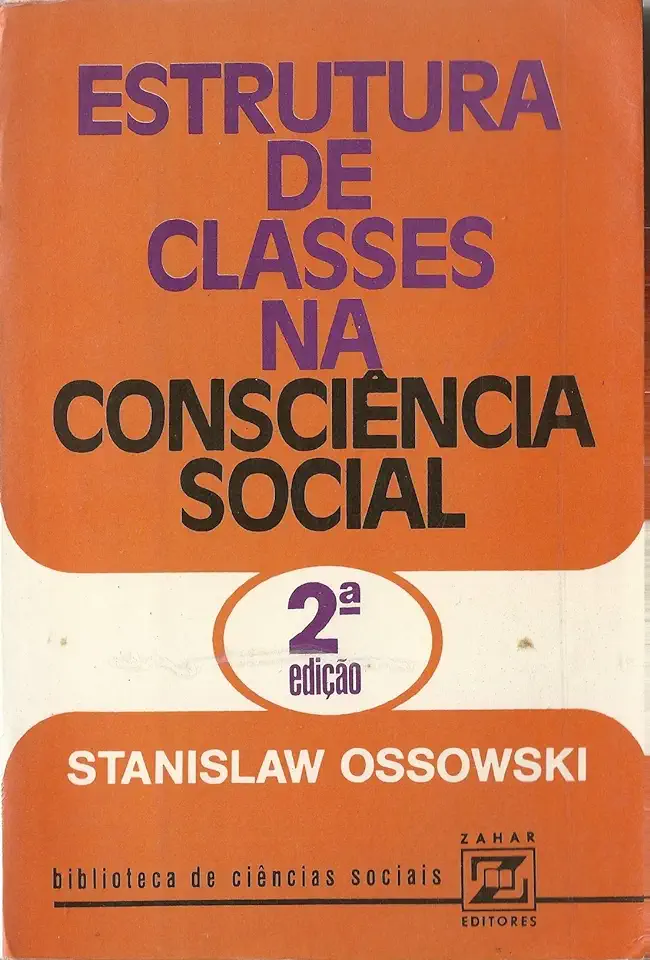
Class Structure in Social Consciousness - Stanislaw Ossowski
Class Structure in Social Consciousness: A Comprehensive Analysis
Introduction: Unveiling the Significance of Class Structure
In his groundbreaking work, "Class Structure in Social Consciousness," Stanislaw Ossowski delves into the intricate relationship between class structure and social consciousness, offering a profound understanding of how social classes shape our perceptions, beliefs, and behaviors. Through a meticulous examination of various social groups, Ossowski unveils the mechanisms by which class structure influences our social consciousness, providing a comprehensive framework for analyzing social stratification and its impact on society.
Exploring the Nexus of Class and Consciousness
Ossowski argues that class structure is not merely an economic phenomenon but a fundamental aspect of social organization that profoundly influences our social consciousness. He contends that class divisions give rise to distinct patterns of thought, values, and behaviors, creating a complex interplay between objective social conditions and subjective experiences. By examining the social consciousness of different classes, Ossowski sheds light on the ways in which class structure shapes our understanding of the world and our place within it.
Class Consciousness and Social Identity
One of the central themes in Ossowski's analysis is the concept of class consciousness. He argues that class consciousness is not simply a matter of individuals recognizing their class position but a collective awareness of shared interests and experiences. Ossowski explores how class consciousness shapes social identity, influencing our sense of belonging, our perceptions of others, and our motivations for collective action. By understanding the dynamics of class consciousness, we gain insights into the formation of social movements, political ideologies, and social conflicts.
The Role of Social Mobility and Class Conflict
Ossowski also examines the role of social mobility and class conflict in shaping social consciousness. He argues that social mobility, both upward and downward, can have a profound impact on our perceptions of class structure and our place within it. Similarly, class conflict, whether overt or covert, can intensify class consciousness and mobilize individuals to challenge existing social inequalities. Ossowski's analysis provides a nuanced understanding of the complex interplay between class structure, social mobility, and class conflict, offering valuable insights into the dynamics of social change.
Implications for Social Theory and Policy
"Class Structure in Social Consciousness" has far-reaching implications for social theory and policy. Ossowski's work challenges traditional notions of class and social stratification, emphasizing the importance of subjective experiences and social consciousness in understanding social inequality. His analysis provides a framework for examining the relationship between class structure and a wide range of social phenomena, including political behavior, cultural practices, and social movements. By integrating Ossowski's insights into social policy, we can develop more effective strategies for addressing social inequalities and promoting social justice.
Conclusion: A Must-Read for Understanding Social Stratification
In conclusion, "Class Structure in Social Consciousness" is a seminal work that offers a profound understanding of the relationship between class structure and social consciousness. Ossowski's comprehensive analysis provides valuable insights into the mechanisms by which class divisions shape our perceptions, beliefs, and behaviors. By exploring the dynamics of class consciousness, social mobility, and class conflict, Ossowski provides a framework for analyzing social stratification and its impact on society. This book is a must-read for sociologists, political scientists, policymakers, and anyone interested in understanding the complexities of social inequality and social change.
Enjoyed the summary? Discover all the details and take your reading to the next level — [click here to view the book on Amazon!]